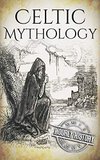Celtic Mythology: A Concise Guide to the Gods, Sagas and Beliefs (Greek Mythology - Norse Mythology - Egyptian Mythology - Celtic Mythology)
amazon.com
Saved by Emilie and
Celtic Mythology: A Concise Guide to the Gods, Sagas and Beliefs (Greek Mythology - Norse Mythology - Egyptian Mythology - Celtic Mythology)

Saved by Emilie and
The great sagas and heroes of Ireland are captured in four cycles, all based on the literary sources above. The first is the Mythological Cycle, which is mostly taken up with the Tuatha dé Danann and the creation of Ireland itself. One such story, told below, is the saga of the Dagda’s harp. The Dagda’s harp was one of his most treasured
... See moreLughnasadh is the final festival of the year and is sacred to the very popular deity Lugh. It usually lasted about two weeks and involved competitions associated with physical skills, particularly horses. Marriages were celebrated, and those joinings of the previous year that had been less than successful would be annulled after a suitable trial
... See moreIt was also a good time for personal renewal.
It leads swiftly to the summer solstice on June 21 or 22 in the Northern Hemisphere and Alban Heruin, an important festival for druids. A vigil is held throughout the night, sitting around the solstice fire, followed by a Dawning Ceremony as the sun rises. This is a powerful time for the casting of spells.
Beltane is the next seasonal festivity and is the origin of May Day. It is associated with Belenus, one of the sun gods; a purification ritual would implore the sun to release itself from its wintery death. It was also the start of the fighting season.
Then, in early spring, as the lambing time arrived and the ewes came into milk, the goddess Brigit would come into her own: there would be festivals of lighting fires and the blessing of water sources. This was the time of Imbolc, around February 1. A sheaf of new oats would be dressed in female clothes and placed in a “Bride’s Bed” in honor of
... See moreIt was a time of bonfires, bringing in the cattle, and settling in for winter. Even the warrior elite put up their weapons and remembered their dead.
At this time, the living were thought to be very close to those in the Otherworld—spirits could warm themselves at a communal hearth, and bards could sing their way across the threshold; festivals could be a little wild. The tribe’s druids would use this time, usually at the darkest time of the night, to make contact and seek guidance from their
... See moreThe Celtic people seldom built temples—they had no need. The sanctity of nature was an inescapable part of their worship, and the land itself was a permanent temple. Sacred places were often located near a water source, especially a well, spring, or a lake.